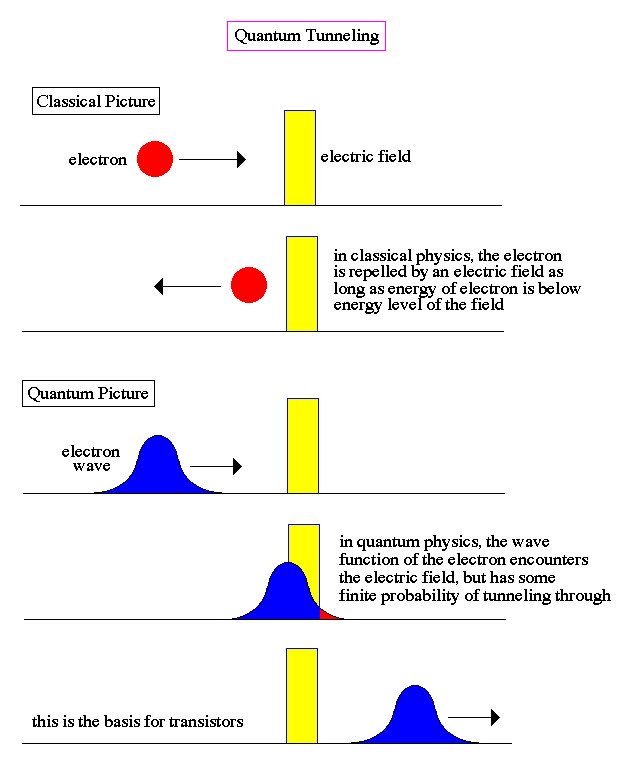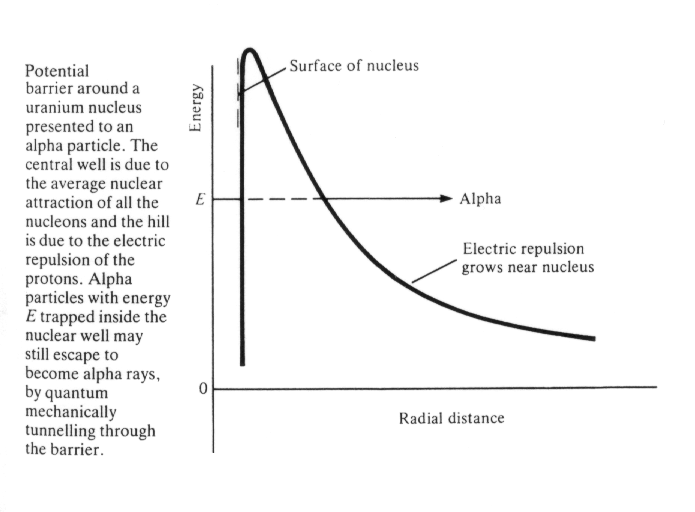

Quantum Tunneling :
The phenomenon of tunneling, which has no counterpart in classical physics, is an important consequence of quantum mechanics. Consider a particle with energy E in the inner region of a one-dimensional potential well V(x). (A potential well is a potential that has a lower value in a certain region of space than in the neighbouring regions.) In classical mechanics, if E < V (the maximum height of the potential barrier), the particle remains in the well forever; if E > V , the particle escapes. In quantum mechanics, the situation is not so simple. The particle can escape even if its energy E is below the height of the barrier V , although the probability of escape is small unless E is close to V . In that case, the particle may tunnel through the potential barrier and emerge with the same energy E.
The phenomenon of tunneling has many important applications. For example, it describes a type of radioactive decay in which a nucleus emits an alpha particle (a helium nucleus). According to the quantum explanation given independently by George Gamow and by Ronald W. Gurney and Edward Condon in 1928, the alpha particle is confined before the decay by a potential. For a given nuclear species, it is possible to measure the energy E of the emitted alpha particle and the average lifetime of the nucleus before decay. The lifetime of the nucleus is a measure of the probability of tunneling through the barrier--the shorter the lifetime, the higher the probability.

With plausible assumptions about the general form of the potential function, it is possible to calculate a relationship between and E that is applicable to all alpha emitters. This theory, which is borne out by experiment, shows that the probability of tunneling is extremely sensitive to the value of E. For all known alpha-particle emitters, the value of E varies from about 2 to 8 megaelectron volts, or MeV (1 MeV = 10 electron volts). Thus, the value of E varies only by a factor of 4, whereas the range of is from about 1011 years down to about 10-6 second, a factor of 1024. It would be difficult to account for this sensitivity of to the value of E by any theory other than quantum mechanical tunneling.
Excerpt from the Encyclopedia Britannica without permission.